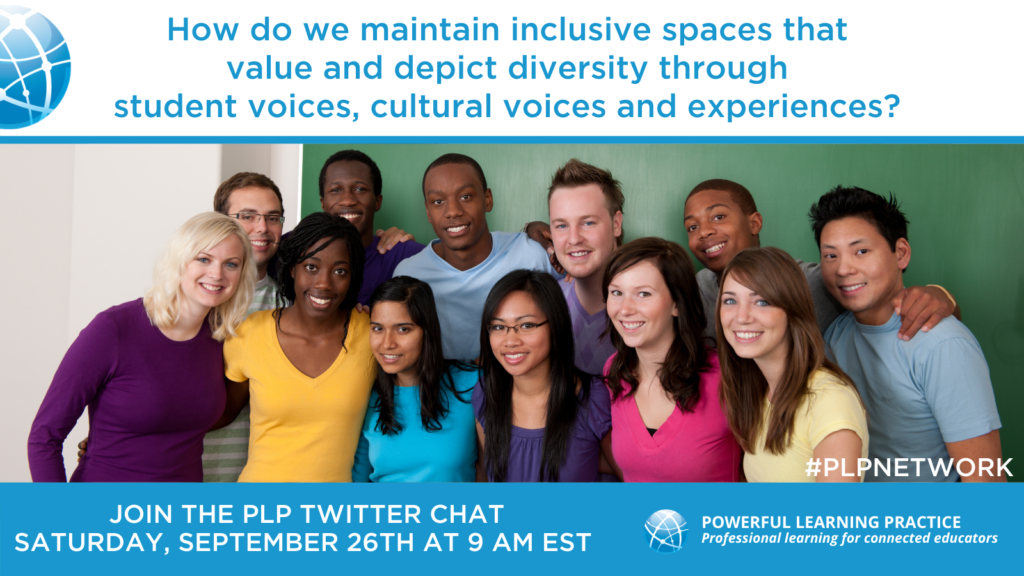
On September 26th, Powerful Learning Practice hosted a Twitter chat which was facilitated by Kim Corbin, PLP’s Culturally Responsive Specialist. The driving question for the chat was: How do we maintain inclusive spaces that value and depict diversity through student voices, cultural voices and experiences?
Inclusion in our classrooms is important so that all students are able to develop a sense of belonging in not only the classroom community but the world at large. Appreciating the diversity within a classroom creates better learning and promotes acceptance of others. Educators are working on developing culturally responsive classrooms through review of their curriculum, including culturally and linguistically diverse teaching strategies, and developing a learning environment reflecting and honoring the cultures of all students. We are all in different places on this journey and the Twitter Chat was designed to begin the sharing of success stories and hard questions on this journey.
In case you missed it, the questions that framed our chat were:
- What does a culturally responsive classroom look like? Sound like?
- How are you recognizing and celebrating the cultural experience of your students?
- Cultural appropriation is defined as unacknowledged or inappropriate adoption of the practices, customs, or aesthetics of one social or ethnic group by members of another (typically dominant) community or society. How do we balance learning from other cultures against exploitation?
- Student voice and empowerment is a key component of culturally responsive education. What ways are you providing student voice in your classroom?
- What burning questions do you have around culturally responsive pedagogy/teaching? What support do you need?
We had a lot of great contributions and recommendations from participants in the chat and will be delving deeper in the PLP Hub. Some key takeaways from the Twitter chat:
- Educators are making intentional and powerful steps in developing a culturally responsive classroom but feel they have a great deal more to learn.
- A culturally responsive classroom mirrors a healthy learning community: respect and honoring all members, while caring for the uniqueness of each individual and what they bring to the table.
- A culturally responsive classroom doesn’t just study about cultures in isolation or by having day/week long celebrations. Rather, the norms and culture of the classroom are made up by the individuals and cultures in the classroom and are shared in context of the learning regularly.
- Student voices can be elevated through passion based projects and problem based learning.
- Sharing of stories through multiple mediums (writing, art, dance, discussion) as well as providing opportunities for choice also support student voice.
- Understanding our role as an educator as well as our cultural experiences factor into our selection of resources used in the classroom. If the culture isn’t ours, we need to stand behind others and elevate those voices to be authentic.
Thank you to Kim Corbin for facilitating and to all the participants for their contributions to this great conversation.
You can view the archived version of the entire chat here. To be notified of our Twitter chats, which are held on Saturdays at 9 am EST, follow @PLPNetwork and the hashtag #plpnetwork. I invite you to continue this conversation, or start one of your own, join the PLP Community Hub at https://plphub.plpnetwork.com.
Theresa Gray
Latest posts by Theresa Gray (see all)
- Support Circles: Creating a Culture of Care - October 7, 2020
- #plpnetwork Twitter Chat Recap: Honoring Diversity and Student Voice - October 7, 2020
- Top Five Reasons to Join a Twitter Chat - September 24, 2020

